Product pictures
| Amount Per 1 roll, 57 g | |||
| Calories | 230 Kcal (963 kJ) | ||
| Calories from fat | 90 Kcal | ||
| % Daily Value* | |||
| Total Fat | 10g | 15% | |
|---|---|---|---|
| Saturated Fat | 5g | 25% | |
| Cholesterol | 5mg | 2% | |
| Sodium | 210mg | 9% | |
| Total Carbs | 32g | 11% | |
| Sugars | 17g | 68% | |
| Dietary Fiber | 1g | 4% | |
| Protein | 3g | 6% | |
| Vitamin A | 0.2mg | 8% | |
| Iron | 1.2mg | 7% | |
| Calcium | 150mg | 15% | |
* Percent Daily Values are based on a 2000 calorie diet. Your daily values may be higher or lower depending on your calorie needs.
Find out how many calories should you eat.
Ingredients And Nutrition Overview
Best
choice Good
choice Poor
choice Avoid
it!
choice Good
choice Poor
choice Avoid
it!
-
WeightWatchers Points: 5.2, PointsPlus: 6, SmartPoints: 10
WeightWatchers Points are estimated by carbohydrates, fats, protein and fiber in product. They are not an affirmation of better quality or nutritional value of the product or its manufacturer. Only way to count for dieters. Less points are better.
Read more at Weight watchers diet review -
Over 25% of daily saturated fat!
Bad! More 25% of daily saturated fat!
For years Saturated fat was claimed to raise cholesterol levels and give us heart attacks. Today different studies refute this claim. They say, that replacing saturated fat with carbohydrates or refined starch or sugar is not changing the heart disease risk. Not processed carbs nor saturated fats are good for you. Only if you replace it with polyunsaturated fat, you'll get a reduction in heart disease risk. So try to have a balanced diet. -
Convert Salt tsps to Sodium mg easily
Salt (NaCl) is not excactly sodium (Na).
It is not right to use these terms as synonyms.
The FDA recommended limit of sodium is 2,300 mg per day (or even less - about 1500 mg while one is on low sodium diets).
This is much less than the weight of salt.
(5,750 mg per day or 3,750 mg for low sodium diet) and not so convenient to calculate.
Know how much sodium is in your salt - without a calculator:
1/4 tsp salt = 600 mg sodium
1/2 tsp salt = 1200 mg sodium
3/4 tsp salt = 1800 mg sodium
1 tsp salt = 2300 mg sodium -
7 tsp of sugars per serving
This volume includes both naturally occurring from ingredients and specially added sugars.
USDA tells us that last years each American consumed an average 130 pounds of caloric sweeteners per year!
That works out to 30 tsp of sugars per day approximately 480 extra calories!
Just to think: Eating just 200 more calories daily than your body requires for body functioning and exercise leads to a 20-pound weight gain in a year. -
Interested in getting more protein?
Protein is important, but some of the protein you find in this product isn't exactly natural.
The protein comes from one of the following sources:
- milk protein concentrate
- whey protein isolate
- soy protein isolate
and that it's not ideal to get protein only from processed goods.
If you're looking for more protein, try beans, quinoa, nuts, seeds, peas and spinach & leafy greens.
Not only do they have protein, they're filled with other vitamins and minerals. -
Contains milk protein concentrate
Milk Protein Concentrate (MPC) is a white to light-cream-colored dry powder.
It is a very cheap milk byproduct of skim milk through a series of processes that includes ultrafiltration,
evaporation and drying of the milk until it reaches a powder form.
Some more info:
- Most of the MPC's are imported as a dry powder from countries with lax food safety regulations (China for example).
- MPC's are added to processed food products to increase the amount of protein without increasing the carbs.
-
Nice! 100% whole grain
Great job! Whole grains are a great source of fiber and other nutrients. Fiber is one of the most important things we need in our diet. Here is what fiber does for you: - Fiber helps your body process food from one end to the other. - Fiber plays an important role in mediating the blood sugar spikes from carbohydrate-laden food. Whole grains are not the only way to get fiber, BUT by choosing them instead of processed grains you've made a smart choice.
-
For dieters: FoodPoints value is 4
* FoodPoints are calculated by Fooducate based on fats, carbs, fiber, and protein. They are not an endorsement or approval of the product or its manufacturer. The fewer points - the better.
-
Highly Processed!
This product is highly processed. If you'll take a look at its ingredient list, you'll discover new words to add to your vocabulary. Many of theses ingredients are required to increase the shelf life of the product and improve the flavor that disappears when food is not fresh.
-
Learn about industrial caramel coloring
Homemade caramel is made by melting sugar in a saucepan. Brown coloring in sodas and some other products is not the same thing. Industrial caramel coloring is made by reacting sugars with ammonia and sulfites under high pressure and temperatures. The chemical reactions create 4-methylimidazole, which in government-conducted studies caused lung, liver, or thyroid cancer or leukemia in laboratory mice or rats. This is why California recently required foods containing caramel color to be labeled as potential cancer-causing agents. But you won't see this warning label any time soon - manufacturers simply reduced the use of caramel color enough that the labeling requirements no longer applied. Caramel color varies slightly between products - when in beer, sauces or baked goods it has just ammonia and when used in soft drinks, it has both sulfites and ammonia. Neither one is a "good" option. Bottom line: Choose something else, less controversial.
-
Contains artificial flavors. Learn why
Companies add artificial flavors to products to make them taste better. They are created in a lab and the formulations are guarded as trade secrets. Flavorings can compensate for flavor loss during processing, substitute for ingredients, lower production costs and increase shelf stability. Artificial flavorings are cheaper to source than natural flavors and are perceived as "worse" than natural flavors. They are more stable (and usually less chemically complex) than natural flavors. Artificial flavors are not necessarily bad for you from a health perspective. however, people with food sensitivities or allergies may want to avoid artificial flavors if they are unnamed. You can always contact the manufacturer for more information.
-
Natural flavors added. Learn why
Companies add flavorings to make products taste better. They are created in a lab and the formulations are guarded as trade secrets. Flavorings can compensate for flavor loss during processing, substitute for ingredients, lower production costs and increase shelf stability. Natural flavorings are more expensive to source than artificial flavors, but tend to be better received by consumers. People sensitive to MSG, vegans, vegetarians and those with allergies should pay special attention to the phrase "natural flavorings" since glutamates, animal products or allergens may be the source of natural flavors. You can always contact the manufacturer for more information.
Allergens
Gluten Allergy, Wheat Allergy, Milk Allergy, Eggs Allergy, Corn Allergy, Soy Allergy, Lactose Allergy
Cinnamon rolls Ingredients
Enriched Flour Bleached (Wheat Flour, Niacin, Reduced Iron, Thiamine Mononitrate, Riboflavin, Folic Acid), Sugar, Water, Margarine (Palm Oil, Water, Salt, Monoglycerides, Citric Acid, Natural Flavor, Beta Carotene Color, Vitamin A Palmitate), Egg Whites, Contains Less than 2% of each of the Following: Dextrose, Monoglycerides, Enzyme Active Soy Flour, Guar Gum, Wheat Gluten, Leavening (Sodium Acid Pyrophosphate, Baking Soda), Ammonium Sulfate, Salt, Enzymes, Calcium Sulfate, Azodicarbonamide, Preservatives (Calcium Propionate, Potassium Sorbate, Sodium Benzoate, Tocopherols), Beta Carotene Color, Yeast, Eggs, Cinnamon, Palm Oil, Calcium Carbonate, Corn Starch, Cocoa (Processed with Alkali), Fumaric Acid, Molasses, Triglycerides, Xanthan Gum, Agar, Sodium Hexametaphosphate, Wheat Flour, Milk Solids Blend (Nonfat Milk, Whey, Milk Protein Concentrate), Sodium Stearoyl Lactylate, Ascorbic Acid Added as a Dough Conditioner, Natural & Artificial Flavor, Titanium Dioxide Color.
You Might Also Like
% RDI of Main Nutrition Facts
12%
of RDI* (230 calories) 57 g
-
Cal: 11.5 %
-
Fat: 15.4 %
-
Carb: 10.7 %
-
Prot: 6 %
-
0%25%75%RDI norm*
Calories Breakdown
- Carbs (55.7%)
- Fat (39.1%)
- Protein (5.2%)
Get Your Recipe of Health!
Follow RecipeOfHealth on Facebook!



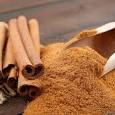
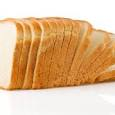
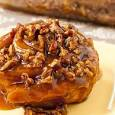
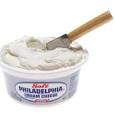

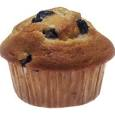
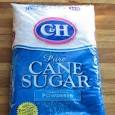


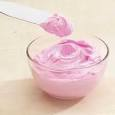
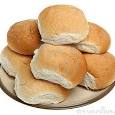
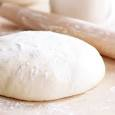















Add your comment